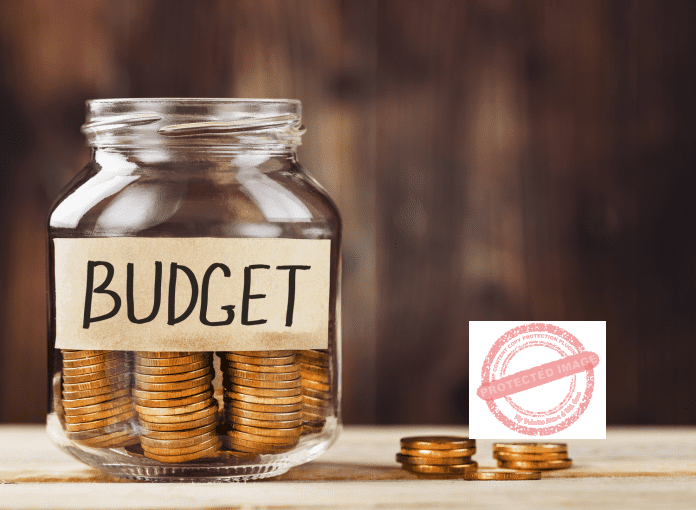Are you wondering how to create a business budget?
If this question is running through your mind, then you are on the right path.
This is because the financial competency of a business can determine how smoothly that business operates.
When financial competency is low, it could lead to failure but when it is good, success will be easier to achieve.
Hence, business owners need to be meticulous in the way they handle their finances.
One of the best ways to handle and manage your finance well is by having proper budgets and sticking with them.
However, some business owners do not know how to create a business budget.
This is nothing to be ashamed of.
You only need to learn how to.
Hence, in this article, we will be helping out by sharing some essential information on how to create a business budget.
So, we advise that you carefully follow us, and acquire the knowledge that you need to create a business budget.
To begin, we shall be looking closely at what business budgets are…
What are Business Budgets? – How to Create a Business Budget
Business budgets are spending plans that estimate a business’s expenses and income over a stipulated time.
The stipulated time is usually yearly, quarterly, or monthly.
They enable business owners to estimate and plan their spending, identify available capital, and predict revenue.
In other words, they help business owners to know their cost of operation and income while keeping track of their business performance.
Additionally, they can help business owners when they are setting their business financial goals.
Importance of Business Budgets – How to Create a Business Budget
Businesses have various items and things they need to pay for consistently to maintain their operations.
Budgets make it easier for them to pay off their expenses and avoid accumulating debts.
When a business does not have a budget, they are most likely to fall into debts which could lead to bankruptcy and the end of the business.
This is because they will spend without considering their income.
For instance, if a business expense for a month is half a million, and their income for that month is not up to a million, they will operate on a loss and debt.
The more this happens, the more debts they accumulate.
However, with a proper budget in place, a business will estimate its income and expenses.
This will make them know what their income is, and plan with it to avoid incurring expenses that are higher than their income.
As a result, they will pay off their expenses and still have a substantial amount left with them.
In other words, budgets help a business to smoothly operate financially.
Hence, they are important for every business.
Components Of Budgets – How to Create a Business Budget
Before you can properly create a budget, you need to know the components that make up a budget.
You will find it easier to follow the steps in creating a business budget when you have understood the following components:
Estimated Revenue
Estimated revenue is the total money expected to be made by a business from its services and products sales.
If you are just starting a business, you would have no previous record to use as a point of reference in making your estimate.
Hence, you can find out what similar businesses revenue is, and use that to create your estimated revenue.
However, while you do this, ensure that you keep it realistic to prevent over-estimation.
Fixed Costs – How to Create a Business Budget
Fixed costs are those expenses that businesses make the same of amount of payment for regularly.
Utility/mortgage payment, building rent, accounting services, employees’ salaries, insurance premiums, and internet services are some of the fixed costs businesses pay for.
These expenses need to be included in your budget.
This will help you keep aside the required amount that will cover them.
Also, they serve as a good way to track the business finance if there is an issue.
Variable Costs
Variable costs are the expenses of services or products that can rise and fall based on the success of a business.
For instance, if there is an increase in demand for one of your business products, you would want to increase the production of that product.
As a result, you will get more raw materials for that product, increase its production labor, and probably get more channels of distribution.
While doing all of this the cost of production will increase.
This is what is considered to be a variable expense.
One-Off Expenses – How to Create a Business Budget
One-off expenses are those unexpected or unplanned costs that businesses incur during operation.
An example of one-off expenses is the cost of fixing a broken machine or furniture.
These expenses do not have any certain way of estimation because they cannot easily be predicted.
However, it is best to keep some cash that will help to sort out these unexpected expenses.
Cash Flow
Cash flow refers to the inflow and outflow of money in a business.
In other words, it is how money goes out of a business and comes into a business.
The idea of how cash flows in your business can be gotten from its previous financial reports and records.
The information gotten from the records can be used to predict your income for the month or year being budgeted for.
Additionally, you should pay attention to when the money comes in as you pay attention to the amount of money coming in.
This will help you to know if there is a dry season or peak season in your business.
When you do, it will enable you to plan and make large investments or purchases when your business is at its highest.
Profit – How to Create a Business Budget
Profit is the last component of a budget.
This is the number gotten when the estimated spend is subtracted from your estimated revenue.
A profit increase is good for your business as shows that it is growing.
You will find it easier to decide on the amount you would like to invest back into your business when you know the profit to be expected.
Steps on How to Create a Business Budget
Creating a realistic business budget will help you avoid financial failure in your business.
The question is ‘how do you create one?’
We are going to answer that question by sharing the steps on how to create a business budget.
You are sure to create a foolproof, effective budget when you follow these steps:
1. Examine Costs
The first step to take before creating your budget is to examine your costs.
To do this, you need to research your business’s operational costs.
Get to know everything about your cost.
When you do, it will give you a basic idea needed to draft a good budget.
If you fail to do this and create your budget based on assumptions you will destroy your goal of creating a good business budget and your business will require more money to keep operating.
When creating your business, you are to include fixed, variable, and one-off costs.
You should add a margin and overestimate the cost needed for your expenditure.
It will not hurt your business as you will require money to handle any unexpected expenditure.
2. Negotiate With Your Suppliers – How to Create a Business Budget
If your business depends a great deal on your suppliers to provide products, then you need to take this step seriously.
Before you begin creating your business budget, you and your supplier need to discuss costs.
You have to find a way to get discount charges for the products, services, or material you will need before making your payment.
Also, if you know the dry or peak seasons in your business, you can negotiate with your provider or suppliers about making most of your payments in your peak season.
This will help you to easily scale through the dry seasons with fewer expenses.
The reason for negotiating is that it will help you reduce your business cost of operation.
Additionally, when you negotiate with your suppliers it helps to build trustworthy relationships with them.
Check here to discover 15 tactics for successful business negotiations.
3. Make an Estimation of Your Business Revenue
Borrowing of money to keep operating and overestimation of revenue has led to the decline and fall of many businesses.
This kills the very essence of creating business budgets.
Hence, it is best to be realistic about things when you are estimating your business revenue.
You can stay realistic by checking and analyzing previous financial reports.
Your business finance should be easy to track on an annual, quarterly, and monthly basis.
Therefore, your financial reports should be done well to serve as a point of reference for the next year or month.
Your budget estimate should solely rely on your business figures.
This will enable you to set attainable and realistic goals, and lead your team to achieve them.
Where your business is new, get publicly available data from businesses similar to yours.
4. Get to Know Your Business Margins – How to Create a Business Budget
Your Business margins are used to assess a businesses’ financial health or status.
It tells you if your business is really making a profit.
In a case where the expenses are more than the amount of money you are making, you will need to identify those expenses that your business is not benefiting from and cut them off.
When you cut them off, your profit will increase and your cost will reduce.
5. Project Your Business Cash Flow
Cash flow has two components which are vendor payments and customer payments.
These components have to be balanced to ensure that cash keeps coming into your business.
To ensure that customers’ payments are timely and keep coming in, you can have flexible terms for payments and receive them through known payment channels.
Also, you can give your customers a period of grace to make payments to encourage payment.
However, have strict policies for late payments.
Bear in mind, you will encounter clients or customers who would not comply with your business payments terms.
When there are missing payments your business cash flow will be affected.
So, ensure you budget for when a customer does not pay back money owed by keeping some money aside.
Project and make an account of the money that comes in and goes out of your business.
6. Consider Industry and Seasonal Trends – How to Create a Business Budget
You ought to know that it is not every time businesses reach their monthly estimates or achieve their monthly goals.
This is because businesses experience months when sales become slow.
Most often the cause of this is either the industry trends or seasonal inconsistency.
During those slow periods, you will need to spend meticulously to avoid putting your business at the risk of closing down.
To do this, your business budget has to plan for them.
Therefore, you have to get to know those periods that your business does better; the peak months.
Then during those peak months, you should aim at generating more revenue that will help you sustain your business during the slow months.
For instance, if you specialize in selling winter clothing, your business will be in full swing during the winter season.
However, when winter is over, fewer sales will be made.
Hence, the majority of your business’s yearly revenue will be gotten during the winter season.
However, you can work to get earnings during those slow seasons by targeting some specific group of people such as travelers or hikers.
When you consider industrial and seasonal trends you will save during peak seasons for the slow seasons.
7. Set Your Spending Goals
Creating a good budget does not only include adding costs and deducting them from earnings.
Your spending has a huge significance on your budget.
It affects both your costs and income.
Hence, when creating your business budget, you need to include spending goals.
This will help to avoid excessive and unnecessary expenses in your business.
For instance, if you keep spending on tools that are not used or needed for your business operation, then you are spending wrongly.
You need to save costs and cut that off.
The money used in those expenses can be saved or redirected to other aspects of your business that will bring in more revenue.
Know those things that are needed and not needed to avoid spending wrongly.
Limit your spending to only those things that your business will benefit from.
8. Join them all Up – How to Create a Business Budget
When you have gotten all the necessary figures and data from the preceding steps, you can then create your business budget.
The first thing to do is to subtract your variable and fixed cost from your business income.
You should have already had an estimation of what your income and expense or costs are.
Once you have done that, you will get to know the amount you can operate or work with.
After that, you should prepare for the unexpected expenses by allowing some money to it.
Bad debts could be included in unexpected expenses.
Your spending goals should be outlined and followed.
If you are creating a year budget, you should remember to prepare for the slow seasons.
Once your budget is in place, ensure that you stick to it and use it to accomplish your business’s long-term and short-term goals.
Budgeting Benefits – How to Create a Business Budget
As we have earlier stated, a business budget helps a business to estimate and effectively allocate funds to various expenses.
It helps a business to keep sailing financially through bad times and good times.
This makes business budgets very essential for business growth.
Apart from its importance in a business, budgeting also provides some benefits to the business that does it.
Some of these benefits are:
It Attracts Investors – How to Create a Business Budget
Businesses that have a budget are most likely to attract investors.
This is because investors appreciate a business that has its finance well accounted for.
When they see a business budget sheet and get to find out that the business owner has an understanding of what their expenses and anticipated income is, they feel safe.
In other words, they will believe that any money they invest into such a business will not be wasted.
It Prepares a Business for the Unexpected
Unexpected things tend to happen no matter how much a person plans.
The same happens in business.
A good business budget will help a business to stay prepared to face any unexpected expenses.
This is because some money is usually kept aside for them.
As a result, you will not have to take funds from an aspect of the business operation or borrow money to meet those unplanned expenses.
Conclusion on How to Create a Business Budget
Your business needs a budget to keep functioning well financially.
Hence, every business owner needs to learn how to create a business budget.
The information we provided in this article, will teach you how to.
So, we recommend that you put it to good use.









